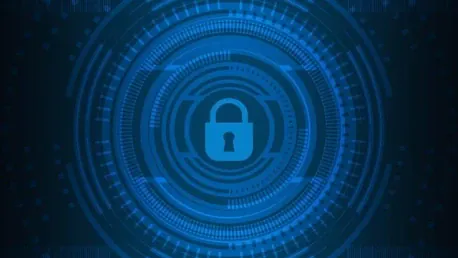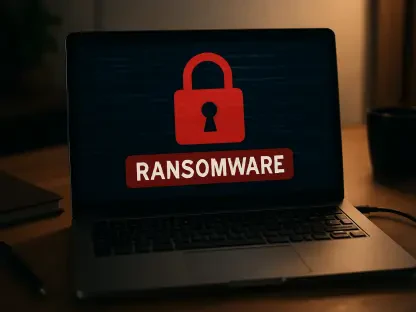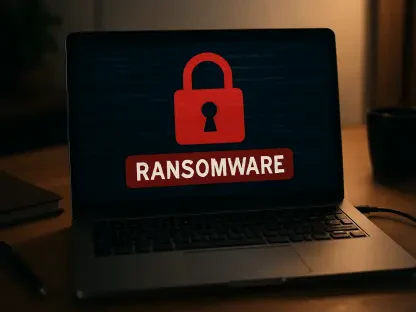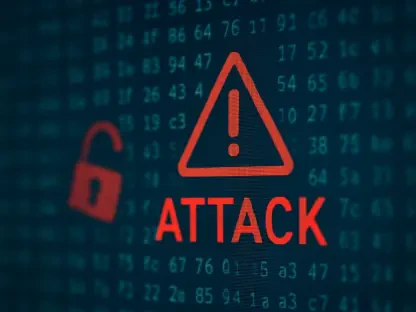In today’s rapidly evolving digital landscape, cybersecurity threats are becoming increasingly sophisticated and pervasive. This heightened complexity necessitates that organizations remain both informed and proactive to protect their digital assets and maintain robust security postures. As part of ongoing efforts to stay ahead of malicious actors, cybersecurity strategies must evolve to counter the latest threats effectively.
The Rise of Ransomware Attacks
Advanced Ransomware Techniques
Ransomware attacks have become a significant threat to organizations worldwide. These attacks are no longer limited to simple file encryption; they now leverage advanced technologies like artificial intelligence (AI) and machine learning (ML) to enhance their effectiveness. AI-driven ransomware can adapt to different environments, making it harder to detect and mitigate. Organizations must implement advanced threat detection systems and regularly update their defenses to counter these sophisticated attacks.
Today’s ransomware threats are far more advanced than what we saw a decade ago. Traditional antivirus software often fails to recognize AI-driven ransomware because of its ability to learn and adapt. This capability allows ransomware to bypass existing security protocols by mimicking normal user behavior, making early detection difficult. To combat this, businesses must deploy adaptive security measures, including real-time monitoring and behavioral analytics. Additionally, endpoint protection platforms that integrate AI and ML can preemptively detect suspicious activities before they escalate into full-blown cyberattacks.
State-Sponsored Cyber Activities
State-sponsored cyber activities are another growing concern. These attacks are often well-funded and highly sophisticated, targeting critical infrastructure and sensitive data. The geopolitical implications of such activities can be far-reaching, affecting national security and international relations. Organizations must collaborate with government agencies and other stakeholders to develop comprehensive defense strategies against state-sponsored threats.
Government-backed cyberattacks aim to infiltrate sectors such as healthcare, finance, and energy, potentially leading to catastrophic consequences. These perpetrators have access to vast resources and cutting-edge technology, often staying ahead of existing cybersecurity measures. Organizations must ensure their defense systems are as adaptive and resilient as possible by coordinating with intelligence agencies and participating in information-sharing initiatives. Establishing robust public-private partnerships is critical for developing dynamic response strategies and mitigating the risks associated with state-sponsored cyber incursions.
Technological Advancements and Their Misuse
AI and ML in Cybersecurity
AI and ML are transforming cybersecurity frameworks, offering new ways to detect and respond to threats. However, these technologies can also be misused by adversaries. AI-driven phishing scams and ML-based malware are becoming more common, posing new challenges for cybersecurity professionals. Organizations must stay ahead of these threats by investing in AI and ML technologies for defense while remaining vigilant against their misuse.
The dual nature of AI and ML in cybersecurity reveals a formidable arms race between defenders and attackers. While these technologies can significantly enhance threat detection and automate response mechanisms, they also allow cybercriminals to launch more sophisticated and targeted attacks. For instance, AI can generate highly believable phishing emails that evade traditional spam filters. To counter this, organizations need to adopt a multi-layered security approach, combining AI-driven tools with human expertise to anticipate and neutralize malicious activities effectively.
Quantum Computing Threats
Quantum computing holds the potential to revolutionize cybersecurity, but it also poses significant risks. Quantum computers could potentially decrypt secure communications, rendering current encryption methods obsolete. Organizations must begin exploring quantum-resistant encryption techniques and stay informed about advancements in quantum computing to prepare for future threats.
The impending advent of quantum computing presents both opportunities and challenges in the cybersecurity domain. Traditional encryption algorithms, such as RSA and ECC, which form the backbone of most secure communications, are susceptible to being cracked by quantum computers. This necessitates the exploration and implementation of quantum-resistant algorithms like lattice-based cryptography and hash-based signatures. Preparing for a quantum future demands that organizations not only invest in research and development but also stay continually updated about progress in quantum technologies to ensure their data remains secure.
Securing Remote Work Environments
Challenges of Telecommuting
The shift to remote work has introduced new cybersecurity challenges. Remote work environments are often less secure than traditional office settings, making them attractive targets for cybercriminals. Organizations must implement robust security protocols for remote workers, including secure VPNs, multi-factor authentication, and regular security training.
With the rise of telecommuting, the attack surface for cyber threats has expanded significantly. Home networks typically lack the rigorous security controls of corporate environments, leaving remote workers vulnerable to attacks. To counter this, companies must adopt a zero-trust architecture, ensuring that no user or device is inherently trusted. This involves continuous verification processes and endpoint security solutions to monitor all access attempts. Furthermore, regular training sessions can empower employees to recognize phishing attempts and other common cyber threats, thereby reducing the likelihood of a successful attack.
IoT Device Vulnerabilities
The proliferation of Internet of Things (IoT) devices in remote work environments adds another layer of complexity. IoT devices are often vulnerable to attacks due to weak security measures. Organizations must ensure that all IoT devices are properly secured and regularly updated to prevent exploitation by cybercriminals.
IoT devices, ranging from smart thermostats to printers, have become ubiquitous in both homes and offices, presenting new security challenges. Many of these devices are designed with convenience in mind, often at the expense of robust security protocols. Default passwords, unencrypted data transmissions, and infrequent firmware updates make them prime targets for hackers. Organizations should enforce strict policies for IoT use, including network segmentation to isolate IoT devices from the main corporate network. Moreover, manufacturers should be held accountable for implementing strong security measures and providing timely updates to mitigate potential vulnerabilities.
Regulatory Changes and Compliance
GDPR and CCPA
Regulations like the EU’s General Data Protection Regulation (GDPR) and California’s Consumer Privacy Act (CCPA) have set new standards for data privacy and security. Organizations must align their compliance strategies with these evolving requirements to avoid penalties and maintain customer trust. This involves regular audits, data protection impact assessments, and continuous monitoring of regulatory changes.
Compliance with GDPR and CCPA is not only a legal requirement but also a means of demonstrating commitment to data protection. These regulations mandate stringent controls over how personal data is collected, stored, and processed, offering consumers enhanced privacy rights. To achieve compliance, organizations must implement comprehensive data governance frameworks, ensuring transparency and accountability in data handling practices. Regular audits and assessments can identify gaps and areas for improvement, helping organizations stay ahead of regulatory changes and maintain a high standard of data security.
Impact on Cybersecurity Strategies
Compliance with regulations is not just about avoiding fines; it also enhances overall cybersecurity. By adhering to strict data protection standards, organizations can improve their security posture and reduce the risk of data breaches. This requires a proactive approach to compliance, with dedicated teams and resources to manage regulatory requirements.
Adherence to data protection regulations can serve as a catalyst for improving overall cybersecurity measures. By embedding regulatory compliance into the core of a cybersecurity strategy, organizations can ensure that their protocols are rigorous and up to date. This proactive approach helps in identifying potential vulnerabilities and addressing them before they can be exploited. Moreover, maintaining compliance fosters trust among customers and partners, reinforcing the organization’s reputation for data security and integrity in an increasingly regulated digital landscape.
Addressing Vulnerability Exploitations
Critical Vulnerabilities
Unpatched systems remain a significant threat to cybersecurity. Critical vulnerabilities across different platforms and software can be exploited by cybercriminals to gain unauthorized access to sensitive data. Organizations must prioritize patch management and ensure that all systems are regularly updated to mitigate these risks.
Patching remains one of the most effective yet often neglected aspects of cybersecurity. Unpatched vulnerabilities can serve as gateways for attackers to infiltrate systems and exfiltrate data. Ensuring timely updates requires a structured approach to patch management, including automated patch deployment and rigorous testing processes. Organizations should prioritize patches based on the severity of vulnerabilities and their potential impact on operations. Regular vulnerability assessments can help identify systems that are most at risk, allowing for a more targeted and effective patch management strategy.
High-Profile Exploits
Recent high-profile exploits, such as the Windows Registry vulnerability and repeated critical RCE vulnerabilities in AWS, highlight the importance of staying informed about emerging threats. Organizations must conduct regular vulnerability assessments and implement robust incident response plans to address potential exploits promptly.
Staying abreast of the latest security threats is crucial for maintaining a robust cybersecurity posture. High-profile exploits often expose critical weaknesses in widely used software and platforms, necessitating immediate action. Conducting regular vulnerability assessments helps in identifying potential risks and mitigating them before they can cause damage. Incident response plans should be well-documented and regularly tested through drills and simulations, ensuring that the organization is prepared to respond swiftly and effectively to any security incidents.
Responding to Cyber Attacks
SonicWall Devices and Casio Data Breach
Recent cyberattacks on SonicWall devices and Casio underscore the importance of immediate action in response to security incidents. Organizations must have a well-defined incident response plan in place to quickly identify, contain, and mitigate the impact of cyberattacks. This includes regular drills and simulations to ensure preparedness.
A robust incident response plan is essential for minimizing the damage caused by cyberattacks. Such a plan involves clear protocols for identifying and containing security breaches, followed by a thorough investigation to understand the scope and impact. Stakeholders should be promptly informed, and corrective measures must be implemented to prevent future incidents. Regular drills and simulations can help familiarize the response team with various scenarios, ensuring that they can act quickly and effectively when real incidents occur. Proactive communication with affected parties can also help in maintaining trust and mitigating reputational damage.
Mirai Botnet and Ivanti VPN Vulnerability
The Mirai botnet and Ivanti VPN zero-day vulnerability are examples of how quickly cyber threats can evolve. Organizations must stay informed about the latest threats and ensure that their security measures are up to date. This includes regular patching, network monitoring, and threat intelligence sharing.
The dynamic nature of cyber threats demands a vigilant approach to security. The Mirai botnet, which capitalizes on vulnerable IoT devices, and the Ivanti VPN vulnerability, highlight the need for continuous monitoring and timely updates. Organizations should establish robust patch management processes, ensuring that all systems are kept current with the latest security patches. Additionally, network monitoring tools can detect unusual activities, enabling quick responses to potential breaches. Collaborating with threat intelligence networks can provide valuable insights into emerging threats, allowing organizations to adjust their defenses accordingly.
Emerging Threats and Mitigation Strategies
Eagerbee Malware and Malicious Chrome Extensions
Emerging threats like Eagerbee malware and compromised Chrome extensions highlight the need for continuous vigilance. Organizations must implement advanced threat detection systems and educate employees about the risks of installing unverified software. Regular security training and awareness programs are essential to mitigate these threats.
The landscape of cybersecurity is ever-evolving, with new threats constantly emerging. Eagerbee malware, known for its advanced capabilities, and malicious Chrome extensions that compromise user data, underscore the importance of proactive threat management. Advanced threat detection systems, capable of identifying and neutralizing sophisticated malware, are crucial for maintaining security. Additionally, fostering a culture of security awareness among employees can significantly reduce the risk of falling victim to malicious software. Regular training sessions and comprehensive awareness programs can empower employees to identify and avoid potential threats.
Weaponized Pentesting Tools and Fake Job Offers
In the rapidly changing digital era, cybersecurity threats are becoming more sophisticated and widespread. This increase in complexity demands that organizations stay informed, proactive, and ready to protect their digital assets while maintaining strong security measures. Cybersecurity is not a static field; it requires constant adaptation and evolution to stay ahead of potential threats from malicious actors who are always refining their tactics. Companies need to implement robust cybersecurity strategies that evolve in response to the latest threats. This includes investing in advanced threat detection and response systems, regularly updating security protocols, and fostering a culture of cybersecurity awareness among employees. Additionally, businesses should collaborate with industry partners, governmental bodies, and participate in cybersecurity forums to share insights and stay ahead of emerging threats. By staying informed and adapting to new challenges, organizations can better secure their digital environments and protect against the growing number of sophisticated cyber threats that endanger their operations.









